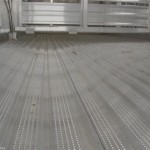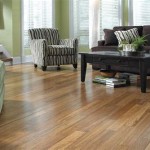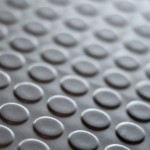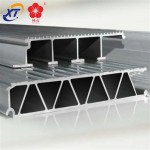Best Glue For Laminate Flooring On Stairs: A Comprehensive Guide
Laminate flooring offers a cost-effective and visually appealing alternative to hardwood, making it a popular choice for many homeowners. Extending this flooring option to staircases provides a seamless and stylish transition between levels. However, successfully installing laminate on stairs requires careful consideration, particularly when selecting the appropriate adhesive. The longevity and safety of the installation depend heavily on a glue's ability to withstand the constant foot traffic and potential impacts associated with staircases. This article explores key aspects of selecting the best glue for laminate flooring on stairs, offering a comprehensive guide to help homeowners and professionals make informed decisions.
The process of adhering laminate flooring to stairs differs significantly from installing it on a flat surface. Stairs involve vertical surfaces, edges, and nosings, all of which demand a glue with strong initial grab and durable bonding properties. The chosen adhesive must not only securely attach the laminate to the stair substrate but also resist the stresses caused by foot traffic, temperature fluctuations, and potential moisture exposure. Therefore, understanding the various types of glue available, their specific characteristics, and their suitability for stair applications is crucial for achieving a successful and long-lasting installation.
Understanding the Key Properties of Adhesives for Laminate Stairs
Several key properties should be considered when selecting an adhesive for laminate flooring on stairs. These properties directly impact the bond strength, durability, and overall performance of the installation. Ignoring these factors can lead to premature failures, posing both safety and aesthetic concerns.
Bond Strength: This refers to the adhesive's ability to resist separation between the laminate and the stair substrate. A high bond strength is essential for stairs, as they endure constant pressure and impact. The adhesive should form a robust and lasting connection that prevents the laminate from detaching over time.
Initial Grab: Also known as tack, initial grab describes the adhesive's immediate holding power. For vertical surfaces like stair risers, a high initial grab is crucial. It prevents the laminate from slipping or sliding down before the adhesive fully cures. This characteristic significantly simplifies the installation process and ensures accurate placement.
Flexibility: While strong bonding is paramount, the adhesive also needs a degree of flexibility. Stairs can experience slight movements and vibrations, especially in older homes. A flexible adhesive can absorb these movements without cracking or losing its bond, extending the lifespan of the installation. This is particularly important when dealing with substrates that may expand and contract with temperature and humidity changes.
Water Resistance: Staircases, especially those located near entrances or in areas prone to dampness, can be exposed to moisture. A water-resistant adhesive prevents water from penetrating the bond line, which can lead to swelling, warping, and eventual delamination of the laminate. Choosing an adhesive specifically formulated for moisture-prone environments is essential for ensuring long-term performance and preventing costly repairs. Furthermore, consider the potential for spills or cleaning with damp cloths. A water-resistant adhesive will protect against these common occurrences.
Cure Time: The cure time refers to the duration it takes for the adhesive to reach its full bonding strength. This factor influences the overall project timeline. Adhesives with shorter cure times allow for faster completion, but it’s vital to adhere to the manufacturer's recommended curing period before subjecting the stairs to heavy traffic. Conversely, adhesives with longer cure times may offer superior bond strength or flexibility, providing a trade-off between speed and performance.
VOC Content: Volatile Organic Compounds (VOCs) are chemicals released by adhesives during and after application. Choosing an adhesive with low or zero VOC content is beneficial for indoor air quality and the health of the installers and occupants. Low-VOC adhesives minimize off-gassing and reduce the potential for respiratory irritation or other health concerns. This is particularly important in enclosed spaces like stairwells.
Exploring Different Types of Adhesives and Their Suitability
The market offers a variety of adhesives suitable for laminate flooring installation, but not all are equally appropriate for stairs. Understanding the characteristics of each type is essential for selecting the best option.
Construction Adhesives: These are general-purpose adhesives designed for a wide range of building materials, including wood, drywall, and concrete. While some construction adhesives may offer adequate bond strength for laminate, they often lack the specific properties needed for stairs, such as high initial grab and flexibility. In general, construction adhesives are not ideal for laminate flooring applications on stairs due to their potentially lower performance compared to specialized adhesives.
Polyurethane Adhesives: Polyurethane adhesives are known for their exceptional bond strength, water resistance, and flexibility. They form a very strong and durable bond with a wide array of materials, including laminate, wood, and concrete. These adhesives are often a top choice for laminate installations on stairs due to their ability to withstand heavy traffic and moisture exposure. However, they can be more expensive and may require careful application to avoid bubbling or excessive expansion during curing. It is vital to always consult the manufacturer's instructions for proper application techniques.
Acrylic Adhesives: Acrylic adhesives are water-based and offer good bond strength and flexibility. They are also low in VOCs, making them a more environmentally friendly option. While acrylic adhesives may be suitable for some laminate installations, they may not provide the same level of water resistance as polyurethane adhesives. Therefore, their suitability for stairs depends on the specific environment and the potential for moisture exposure. For staircases in humid or damp areas, acrylic adhesives may not be the best choice. However, modern acrylic adhesives are continuously being developed, and some are specifically formulated for enhanced water resistance.
Epoxy Adhesives: Epoxy adhesives offer extremely high bond strength and chemical resistance. While they are not typically used for full laminate installations, they can be valuable for repairing damaged areas or securing stair nosings. Epoxy adhesives form a rigid bond, which may not be ideal for absorbing vibrations or movements on stairs, but their superior strength makes them suitable for specific applications where a permanent and unyielding bond is required.
Hybrid Polymer Adhesives: These adhesives combine the best properties of different adhesive types, such as polyurethane and silicone. They offer excellent bond strength, flexibility, water resistance, and low VOC content. Hybrid polymer adhesives are often considered a premium option for laminate installations on stairs, providing a balance of performance and environmental benefits. They may be more expensive than other options, but their superior characteristics can justify the higher cost, especially in demanding applications.
Preparing the Substrate for Optimal Adhesion
Proper substrate preparation is as crucial as choosing the right adhesive. A clean, dry, and level surface ensures optimal adhesion and prevents potential failures. Neglecting this step can significantly reduce the bond strength and lifespan of the installation, regardless of the adhesive used.
Cleaning: The substrate should be thoroughly cleaned to remove any dust, dirt, grease, or other contaminants that could interfere with adhesion. Vacuuming and wiping with a damp cloth are generally sufficient. For particularly greasy or oily surfaces, a degreasing agent may be necessary. Ensure the cleaning agent is compatible with the substrate and does not leave any residue that could impede bonding. Allow the surface to dry completely before applying the adhesive.
Leveling: Any unevenness in the substrate should be addressed before installing the laminate. Self-leveling compounds can be used to fill in gaps and create a smooth, even surface. Proper leveling ensures that the laminate is fully supported, prevents stress on the adhesive, and reduces the risk of cracking or delamination. Minor imperfections can sometimes be addressed with shims or thin layers of patching compound. The goal is to create a consistently flat and even surface for the laminate to adhere to.
Priming: Some substrates, such as porous concrete or plywood, may benefit from priming. A primer improves adhesion by sealing the surface and creating a more uniform bonding surface. Select a primer that is compatible with both the substrate and the adhesive. Follow the manufacturer's instructions carefully for application and drying times. Priming can significantly enhance the bond strength, particularly on substrates with high porosity or uneven surfaces.
Moisture Testing: Before installing laminate on stairs, it's essential to check the moisture content of the substrate. Excessive moisture can cause the laminate to swell, warp, or delaminate. Use a moisture meter to measure the moisture content of the substrate, especially in concrete or plywood. If the moisture content exceeds the manufacturer's recommended limits, it may be necessary to allow the substrate to dry further or apply a moisture barrier before proceeding with the installation.
In conclusion, choosing the best glue for laminate flooring on stairs involves a comprehensive understanding of adhesive properties, different adhesive types, and the importance of proper substrate preparation. Carefully considering these factors will significantly increase the likelihood of a successful and long-lasting installation.

Recommended Adhesives Resources

How To Install Laminate Flooring On Staircase Step By Guide

How To Install Lvp Or Laminate Stair Nose

How To Install Laminate Flooring On Stair For Beginner

How To Install Laminate On Stairs Step By For Beginners

How To Install Laminate Flooring On Stairs Direct Wood

How To Install Laminate Flooring On Stairs 13 Steps

Vinyl Floor Stair Cap Trim Adhesive

How To Install Laminate Flooring On Stairs Direct Wood

How To Fit Laminate Flooring On The Stairs Esb
Related Posts








